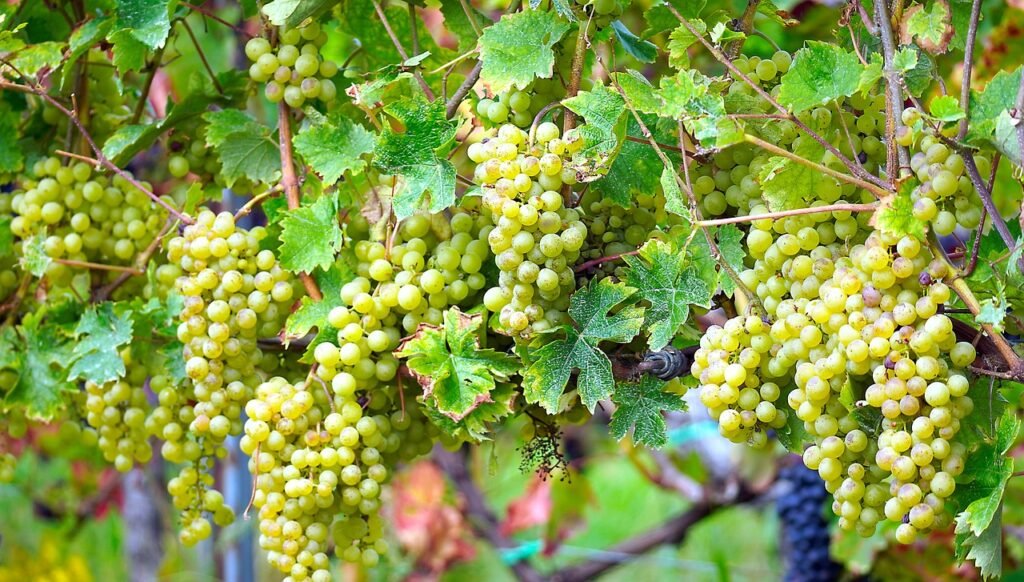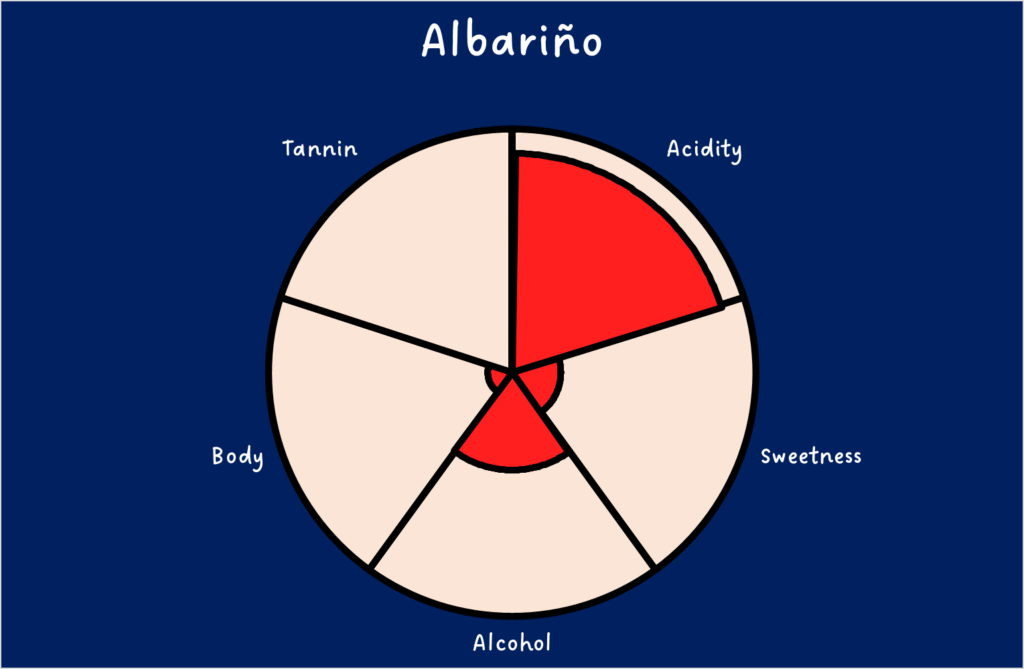
Nearly noble grape varieties: Albariño
If you enjoy a wine which dances on your palette, brings zingy citrus flavours and makes a great accompaniment to seafood, salad and chicken dishes, you may well be about to become an Albariño fan! This grape which hails from Spain and just over the border in Portugal is known for its refreshing pale lemon coloured wines. But, could there be more to this variety than easy drinking wine? Let’s find out…
About the grape
This is a thick skinned aromatic grape, which has a reputation for having a lot of pips. The variety copes well with heat and humidity. But it tends to be grown in cooler climate areas. Grapes are typically high in acidity and sugar, sometimes with a hint of salinity. It buds early and can be sensitive to frosts. Usually it ripens towards the middle of the season. It is often grown under larger canopies. This way the green leaves are used to protect the grape from over exposure to the sun.
Why it deserves its nearly noble status?
Its importance to Spanish wine – Almost 95% of the white grapes in Rías Baixas are Albariño, and it is plays a very important role in Spanish white wine.
Its role in Vihno Verde – This wine grows not only in Spain, but Portugal where it is used extensively in the slightly effervescent fresh, low alcohol Vihno Verde wines.
Versatility – This grape can make the low alcohol light Vihno Verde wines of Portugal, crisp and refreshing single varietal wines in Rías Baixas. Wines which can be aged, smoother lees aged examples and even sparkling wines.
Some of the oldest vines in the world – Some of the oldest surviving vines in the world are Albariño vines, with examples being over 300 years old!
Its future potential – This variety has tended to be pigeon holed as a light, refreshing, easy drinking, easily forgotten variety. However, any grape with high acidity and thick skins it one who potentially has the ability to produce more complex and age able wines. Some producers are beginning to experiment with longer macerations, oak aging, lees contact. Techniques you might see used in supposedly more sophisticated wines. I think this variety could, like Riesling, rise from its historic reputation and become recognised for better quality wine than it has traditionally been associated with.
Profile
Renowned for its high acidity, typical simple dry wines have characteristics such as:
- High levels of tart acidity
- A dry style
- Low and even very low alcohol levels
- Light body
- No tannin

These wines tend to be dominated by citrus flavours and aromas such as lemon, lime, grapefruit and nectarine. Background hints of stone fruits are often present (think peach). Also some yellow melon. Florals are likely to present and sometimes a beeswax character and a salinity. Food pairings are simple fish and chicken dishes, salads and generally sea food.
Production
Most production is in Spain and Portugal, with smaller productions in the United States, Italy and even as far north as the United Kingdom.
You’ll like Albariño if you like:
Sauvignon Blanc, Furmint, Riesling
I strongly recommend keeping an eye on the Albariño market over the next few years, especially for more experimental complex expressions. As this is a quickly developing area, I’m especially keen to hear from you if you’ve found a bottle you particularly enjoyed. Recommendations always gratefully received, and can be made by dropping me a line. In the meantime, keep exploring this beautiful planet we live on, one glass at a time!